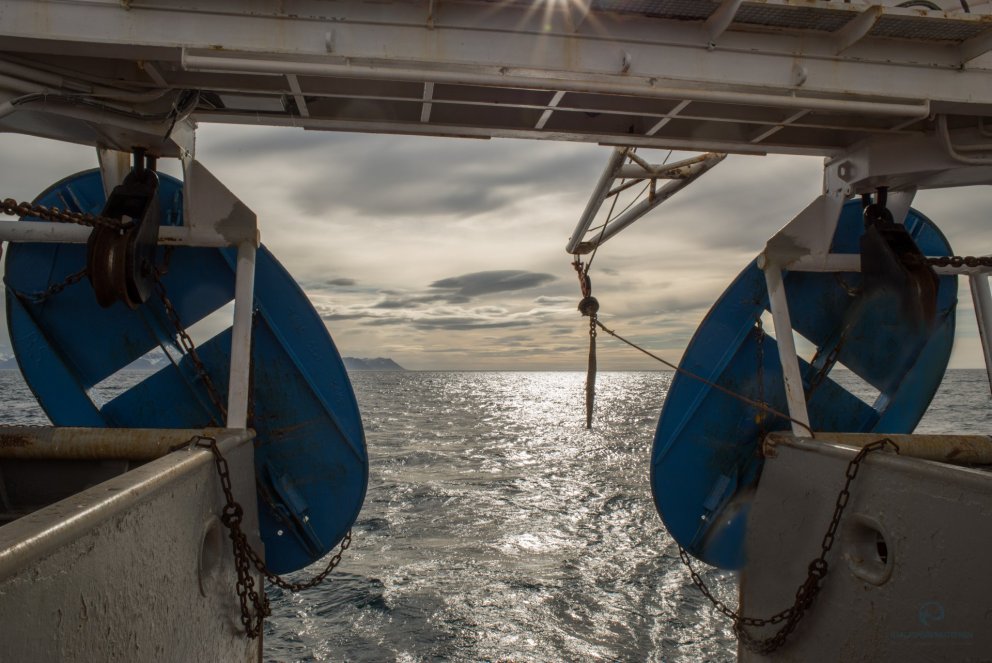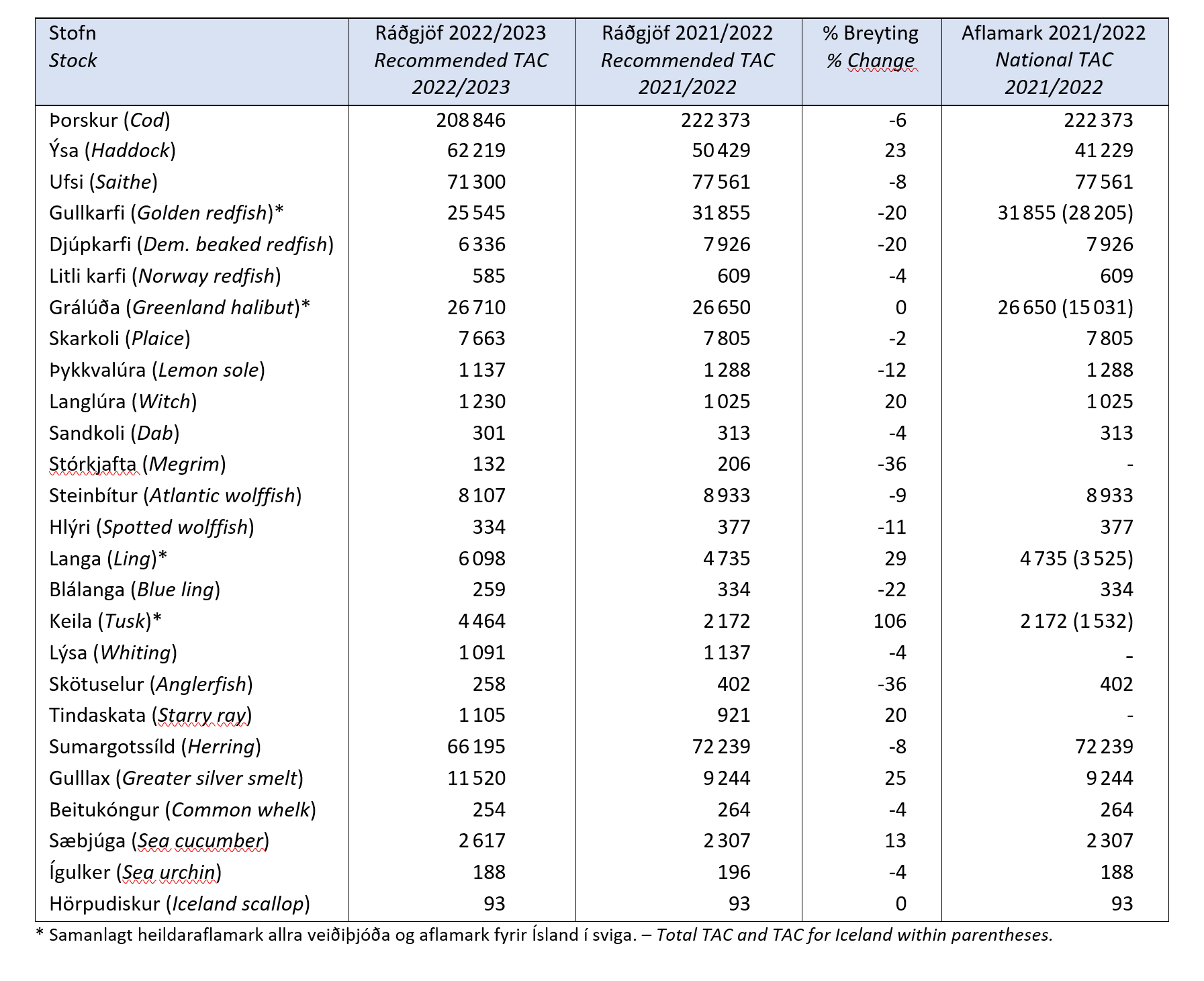- Research
- Fish tagging
- Lumpfish research
- Oceanography
- Seabed mapping
- Arnarfjörður
- Drekasvæði
- Ísafjarðardjúp
- Jökulbanki
- Jökuldjúp
- Kolbeinseyjarhryggur and adjacent area
- Kolluáll
- Langanesgrunn
- Látragrunn
- Nesdjúp
- Reykjaneshryggur and adjacent area
- Selvogsbanki
- South of Selvogsbanki
- South of Skeiðarárdjúp
- South of Skerjadjúp
- Southeast of Lónsdjúp
- Southwest of Jökuldjúp
- Suðausturmið
- Suðurdjúp
- Vesturdjúp
- East of Reykjaneshryggur
- Vestfjardarmid
- Seal research
- Whale Research
- Advice
- About
MFRI's advice on fishing opportunities for 28 fish stocks in Icelandic waters in the 2022/2023 quota year
15. June 2022
 Image. Svanhildur Egilsdóttir.
Image. Svanhildur Egilsdóttir.
MFRI's advice on fishing opportunities for 28 fish stocks in Icelandic waters in the 2022/2023 quota year has been released and is available from the MFRI website under Advice.
MFRI advises a TAC of 208 846 t of cod for the 2021/2022 fishing year. The advised TAC is a 6% decline from the current fishing year's TAC of 222 373 t. The advice is based on the management plan adopted by Icelandic authorities. The reason for the decrease is due to a lower estimate of the reference biomass compared to previous years and the effect of the catch stabiliser in the harvest control rule.
The reference biomass of cod is expected to increase slightly in the next two to three years when the 2019 and 2020 cohorts enter the reference biomass as they are estimated to be above average in terms of size.
According to the Icelandic management plan, the TAC for haddock in 2022/2023 will be 62 219 tonnes which is an 23% increase from the current fishing year's TAC. The reference biomass is expected to increase in the next two years as the 2019 and 2020 cohorts are above average.
The advice for saithe, when the Icelandic management plan is applied, is 71 300 tonnes for 2022/2023 fishing year, a 8% decrease from current fishing year’s TAC.
According to management plan, the TAC for golden redfish in the East Greenland / Iceland / Faroe Islands area in the 2022/2023 fishing year is 25 545 tonnes, 20% less than for the current fishing year's TAC. Since 2009, recruitment has been very low, and the spawning stock biomass has decreased substantially in recent years and is now close to MGT Btrigger. The spawning stock biomass is projected to decline below MGT Btrigger in 2023 and hence, the advice is likely to decrease further.
Advice for Greenland halibut is the same as the previous year and is 26 710 tonnes.
The stock size of the Icelandic summer spawning herring has increased following a period of constant decline since 2008. The decline was related to poor recruitment and the persistent infection by a protozoan parasite. The 2017 and 2018 cohorts are estimated to be large and are now the main cohorts of the reference biomass. The advice for the 2022/2023 fishing year, when the Icelandic management plan is applied, is 66 195 tonnes or 8% less than the previous fishing year's TAC.
The table below shows the MFRI advice for the 2022/2023 fishing year.
TAC recommended by the Marine and Freshwater Research Institute for the quota year 2022/2023, along with recommended and national TAC for the quota year 2021/2022 (in tonnes). Also shown is the % change in advice between quota years.

